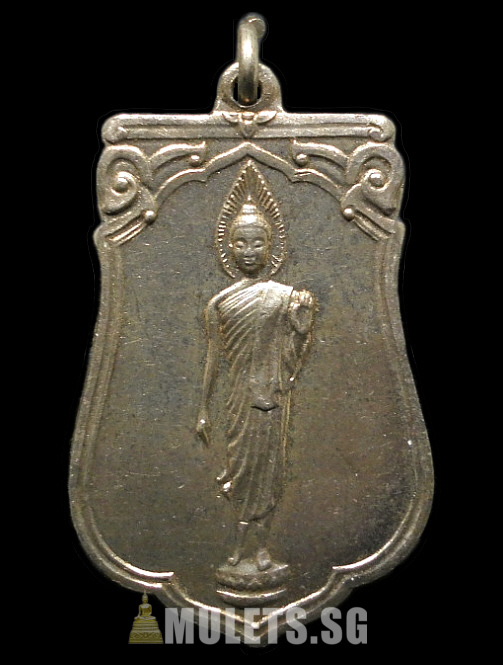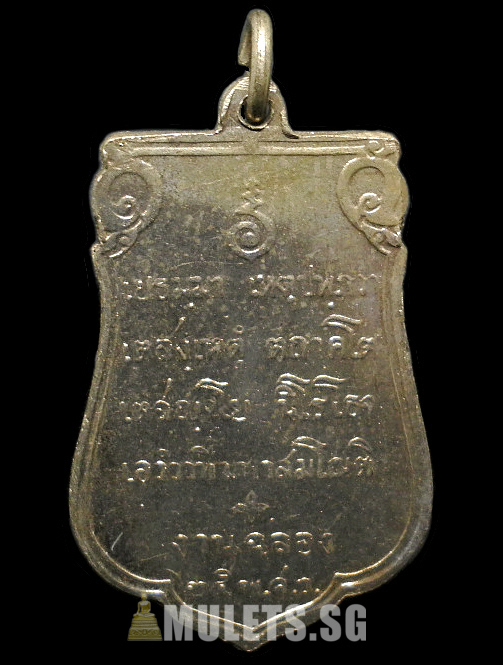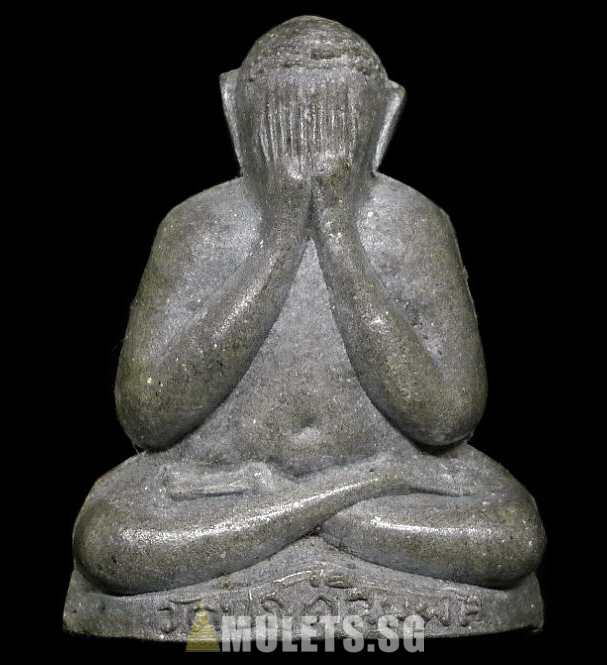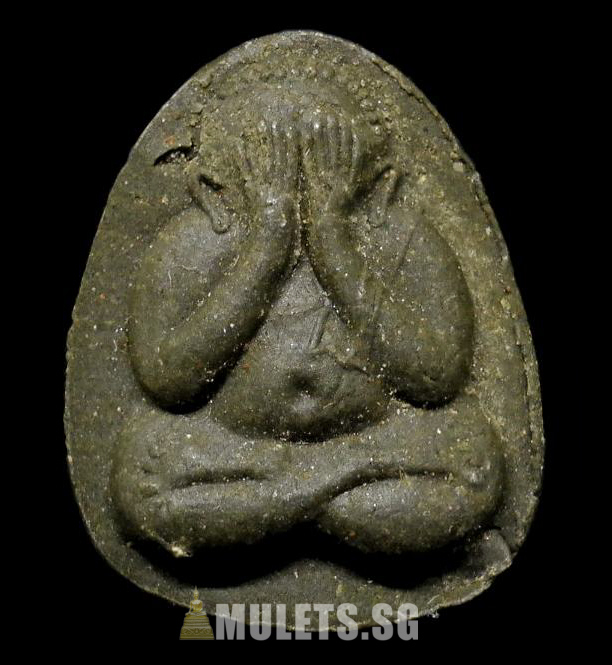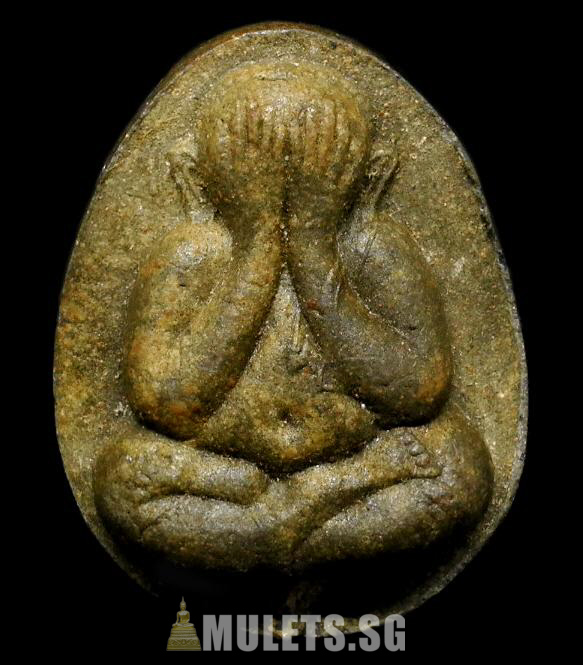Phra Leela 25 Buddha Sattawat is named as such because the year B.E.2500 was the 25th Buddhist Century, or Buddhist Era (B.E.). In Thai, it is usually abbreviated as พ.ศ. (Phor Sor) which stands for Phuttha Sattawat (Buddhist Century). Hence 25 Buddha Sattawat simply means 25th Buddhist Century.
A committee was convened to arrange the creation of a batch of Buddha amulets to commemorate this event. A total of 5,000,000 baht was raised for the purpose of the creation of the amulets. The consecration ceremony spanned 3 days and 3 night in Wat Suthat, Bangkok in B.E.2500. 108 famous guru monks of the era from across the country were invited to participate in the consecration of the amulets. There were a few types of amulets created, including a Buddha statue which is relatively rare and valuable.
The amulets created were either made of metal or baked clay and the quantity created are as follows:
-
Rian Phra Leela
– Nur Thong Kham (Gold) – 15 pieces
– Nur Nak (Pink Gold) – 30 pieces
– Nur Ngern (Silver) – 300 pieces
– Nur Chin Takua (Lead-Tin alloy) – 2,421,250 pieces
-
Rian Sema
– 2,000,000 pieces (total including gold, pink gold, silver and alpaka material)
-
Nur Din (Baked-clay)
– 2,421,250 pieces
The Phra Leela lead-tin alloy pieces, there were 2 moulds used, namely the original lead / tin block which is known as Block Thammada (ordinary mould) and re-using the mould for silver pieces to pump lead / tin pieces, known as Block Niyom (popular mould). Block Niyom pieces have a needle-like protruding line below the Buddha image and is sometimes referred to as Phim Mee Khem (with needle style). The material was created with the following 9-metal alloy (Nawak): 1 baht (weight) of lead, 2 baht of bornite, 3 baht of molten iron, 4 baht of iron ore, 5 baht of quicksilver, 6 baht of zinc, 7 baht of copper, 8 baht of silver and 9 baht of gold. The material was then melted along with gold, silver, copper sheets which were inscribed with spells by many guru monks to create the final alloy to be used.
The Rian Sema pieces are divided into 2 main moulds, namely big arms style (Block Niyom) and slender arms style (Block Thammada), with the big arms style being more popular as it is re-using the mould for gold pieces to pump the Alpaka pieces.
For the Nur Din (baked-clay) pieces, many different coloured pieces, including multiple tones and even minerals were produced due to the baking process. There was only 1 type of material used, baked clay, which is mixed with 108 different types of flowers and the earth in front of the main temple hall collected from the temples all over Thailand. Ancient powder amulets were donated by many devotees and also sacred powder donated by guru monks all over Thailand for the ceremony was also mixed into the material. Due to the baking process, the results range from black to white and many colours in between. Black pieces are the most popular as they are the toughest and most durable due to their inherent nature being nearest to the fire in the kiln. The white pieces are the rarest as they are the furthest away from the fire yet are also as popular due to their rarity. There were other colours in between such as yellow, red, green, etc. Due to the quantity produced, many moulds were required to create these amulets, which also results in many styles which are actually minor differences due to the individual mould.
Another group in the same category was caused by accident. Due to the high quantity of these clay amulets being baked in the process, some pieces turn out to be multi-tone in colour, sometimes up to 3 different tones. There were some pieces which during the baking process, minerals in the clay erupted on the surface and became visible. It is important to note that because the minerals erupted from the core material onto the surface, the minerals are actually embedded on the surface. These are known as the Nur Rae (minerals) pieces and are not commonly seen.
Contrary to popular beliefs that due to the large quantity produced, there were no imitations for the common pieces such as clay and lead /tin pieces. This is a misconception as there are indeed imitations which are either of the wrong size for the clay pieces or missing markings / wrong material for the metal types.
